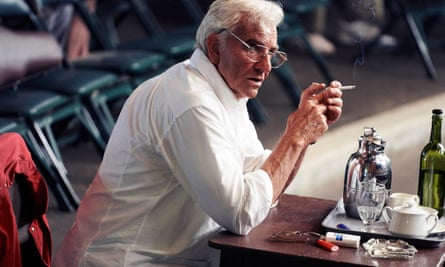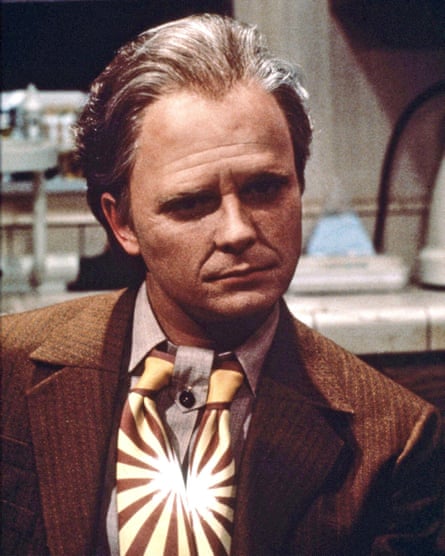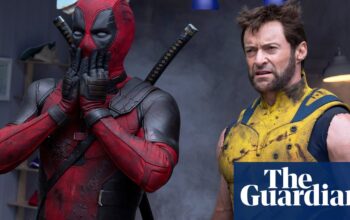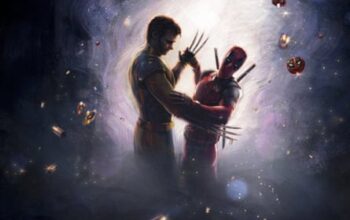A
When the initial pictures from Bradley Cooper’s recent movie, Maestro, were released, one aspect stood out more than anything else: his nose. The prosthetic nose that Cooper wore to play Leonard Bernstein appeared to be overly exaggerated, causing controversy and accusations of anti-Semitism online, despite being approved by Bernstein’s relatives. Some even argued that the nose deserved recognition for its performance in the film.
The controversy became so intense that even Bradley Cooper felt the need to comment, stating that his nose was necessary to balance out the rest of his facial prosthetics. He considered not including it, but realized that it was important for achieving a harmonious overall look, especially since his lips and chin are very different from Lenny’s. Ultimately, omitting the nose just didn’t work.
However, as Maestro’s debut draws near, it appears that the previous clue may have been misleading. This is evident in the latter part of the movie when Cooper portrays Bernstein during his later years. The transformation is truly impressive and could potentially be considered the most realistic aging makeup in film history.

Variety recently released an article titled ‘The Transformation of Bradley Cooper’s Nose, Neck, and Chin by Maestro Prosthetics Artist Kazu Hiro: An In-Depth Look’. This piece serves as both a response to the recent ‘Nosegate’ controversy and an attempt to regain Oscar attention. It delves into the intricate process of how Kazu Hiro utilized his skills to alter Cooper’s facial features for his portrayal of Leonard Bernstein in Maestro. The article is a compelling read that sheds light on the impressive work of prosthetics in the film industry.
This text is a tribute to Hiro, an artist who left the film industry in 2012 but was convinced by Gary Oldman to return and transform him into Winston Churchill for The Darkest Hour. Hiro won an Oscar for this job and then repeated his success with John Lithgow as Roger Ailes two years later. A Variety article explains his impressive skills, delving into the precise techniques he used to create lip and chin pieces and modify Bradley Cooper’s nose wings to change his voice to match Leonard Bernstein’s. In order to film the final scenes, Hiro spent five hours each day preparing Cooper in a complex outfit, including a full-body suit and various prosthetics for the eyes, forehead, lips, neck, and hands.
If Maestro does not win at the Oscars this year, it is highly likely that Hiro will receive recognition for his exceptional makeup skills. This is primarily due to his groundbreaking advancements in the challenging field of aging make-up.
It was necessary, as the text suggests. The technique of ambitious storytelling often revolves around one character’s life over many years. However, in the majority of Hollywood’s existence, this has been a challenging feat to achieve. Despite its acclaim, even Citizen Kane struggles to convincingly portray its main character as an old man. While the aging effects were advanced for its time, watching it now reveals the obvious use of a young actor wearing makeup.
Exclude the advertisement for the newsletter.
after newsletter promotion

One popular instance of poor elderly makeup found online can be seen in Bette Midler’s appearance in the 1991 film For the Boys. Her character is meant to portray a dignified old age, but instead she looks remarkably similar to Mrs. Doubtfire. This resemblance is so distracting that it takes away from the film itself. There are many other noticeable examples, such as Linda Hamilton in Terminator 2 and the aging effects in Back to the Future 2. The final scene in the last Harry Potter film also falls short in its portrayal of aging.
In the past, there have been successful performances where actors completely embody their roles. However, these exceptional performances are rare. For example, Max von Sydow, who was in his 40s at the time, disappeared into his role as the elderly Lankester Merrin in The Exorcist. David Bowie also transformed completely in The Hunger. However, these transformations can easily be ruined if the makeup is too obvious or if the character still retains some of their youthful energy.
While digital de-ageing has become popular, giving actors such as Robert De Niro and Harrison Ford the appearance of their younger selves, the opposite is not as common. One notable example is in the film Avengers: Endgame, where Chris Evans briefly portrays a very old Captain America. While prosthetics were used for his aged appearance, a VFX team was also involved to enhance the transformation by altering his physical features and digitally applying an elderly man’s skin tone during post-production.
This is beneficial, but there is still an eerie aspect to it. The result achieved in Maestro, through the use of human skill and careful attention to detail, is uncanny. It involves a complete transformation, and this is all due to meticulous work on hand prosthetics and nose-wing inserts. Despite many years of proof, there is still a method to make elderly makeup appear realistic. The downside for Hollywood is that Kazu Hiro only possesses one set of hands.
Source: theguardian.com


